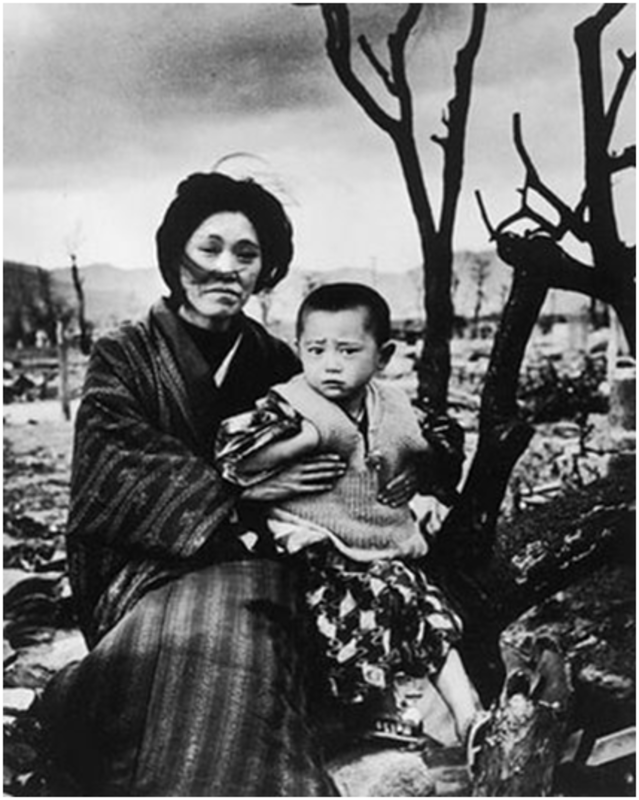
The atomic bomb detonated on August 6, 1945 courtesy baltimoresun.com.
It was on August 6, 1945 that the Enola Gay dropped the atomic bomb on Hiroshima, Japan. Sixty-nine percent of its buildings were completely destroyed; another 7% were badly damaged. Three-quarters of the schools were destroyed. A large portion of the city was flattened. Somewhere between 90,000 and 140,000 people died as a result. Anywhere from 2000 to 6500 children were rendered orphans. Many unborn babies died. With temperatures in the tens of millions of degrees, anyone within half a mile of the explosion was incinerated. Survivors suffered severed burns. Radiation lingered long after the mushroom cloud disappeared. Skeptics warned that it would be 75 years before any vegetation would grow in the radiation-soaked soil. Thirty newsreels, taken in the weeks after the bombing, were absconded by the American military in an effort to hide the horror.

A flattened Hiroshima courtesy theworldinourbackyard.wikispaces.com.
The end of the Second World War did not see the end of the suffering in Hiroshima. In the post-war years, the city lacked food and shelter. The black market flourished. The incidence of cancer, particularly thyroid, breast, lung and leukemia skyrocketed.

Hiroshima survivors courtesy japanfocus.org.
So how did Hiroshima rise from the ashes? Hiroshimans worked around the clock to clear 2.4 million acres of debris in the four years after Japan's surrender. A 30-acre park was laid out dedicated to peace called Peace Memorial Park. A museum was built, also called Peace Memorial. Inside its walls are artifacts to help its visitors remember the horrors of nuclear war: remnants of clothes, a twisted tricycle and a lunch box filled with charred food.

A twisted tricycle in the Peace Memorial Museum courtesy images.travelpod.com.
By the 1980's, Hiroshima had been completely rebuilt, resembling a modern city. The damaged buildings were gone. The radiation had diminished. No longer rationing, Hiroshima boasted a strong economy. While skeptics warned that nothing would grow in Hiroshima's soil, they were wrong. The first flower to poke its head out of the charred rubble, the oleander, has become the official flower of Hiroshima. But there is one constant reminder of the bomb -- "the atomic dome" -- a burnt out shell of a government building.

"The Atomic Dome" courtesy www.atomicarchive.com.
May Hiroshima continue to heal.

Hiroshima today courtesy imageshack.us
Sources: www.time.com
www.pcf.city.hiroshima.jp
No comments:
Post a Comment